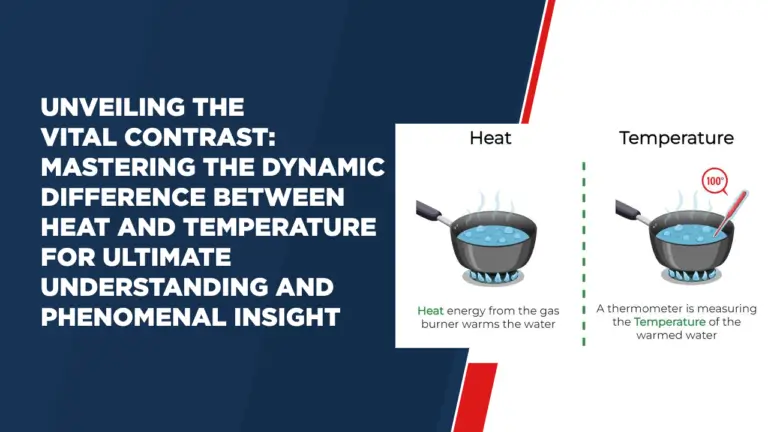Unveiling the Vital Contrast: Mastering the Dynamic Difference Between Heat and Temperature for Ultimate Understanding and Phenomenal Insight
Introduction
In the realm of thermodynamics, the concepts of heat and temperature hold paramount importance. Often used interchangeably, these terms, however, encompass distinct physical properties that play a pivotal role in various natural and engineered processes. By delving into the fundamental differences between heat and temperature, we can unlock a deeper comprehension of how energy flows and dissipates throughout the universe.
Distinguishing Heat and Temperature
While heat and temperature are intrinsically related, they are not synonymous. Heat refers to the transfer of energy between objects due to a temperature difference. In contrast, temperature reflects the measure of the average kinetic energy of particles within a substance. The key distinction lies in the fact that heat is an energy transfer process, whereas temperature quantifies the intensity of thermal motion.
Defining Heat and Temperature
Heat is a form of energy that spontaneously flows from an area of higher temperature to an area of lower temperature. It is the driving force behind numerous natural phenomena, including conduction, convection, and radiation. Temperature, on the other hand, is a scalar quantity measured in degrees Celsius (°C) or Kelvin (K). It provides insight into the thermal state of an object and dictates the direction of heat transfer.
Understanding the Units
The units of heat and temperature are distinct, reinforcing their dissimilarity. Heat is quantified in joules (J) or calories (cal), with 1 calorie defined as the amount of energy required to raise the temperature of 1 gram of water by 1 degree Celsius. Temperature, as mentioned, is measured in degrees Celsius or Kelvin, with Kelvin being the absolute temperature scale where 0 K represents the point of zero thermal energy.
The Dance of Energy
To grasp the intricate relationship between heat and temperature, envision a hot cup of coffee left on a table. The coffee will gradually transfer heat to the surrounding air, as the air molecules possess lower thermal energy. This exchange occurs until both the coffee and the air reach thermal equilibrium, wherein their temperatures are equalized.
Phenomenal Implications
Mastery of the disparity between heat and temperature opens doors to unparalleled comprehension in various fields. Engineers can optimize heat transfer systems, meteorologists can forecast weather patterns, and physicists can model the behavior of matter at extreme conditions.
Conclusion
In the grand tapestry of thermodynamics, the divergence between heat and temperature is a linchpin for understanding energy dynamics. While heat facilitates the exchange of energy, temperature quantifies the agitation of particles. By recognizing their disparity, we embark on a journey toward deeper scientific insights and innovative applications that shape our technological landscape.




